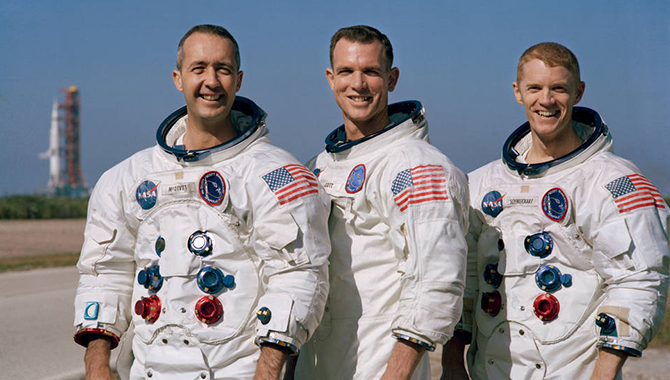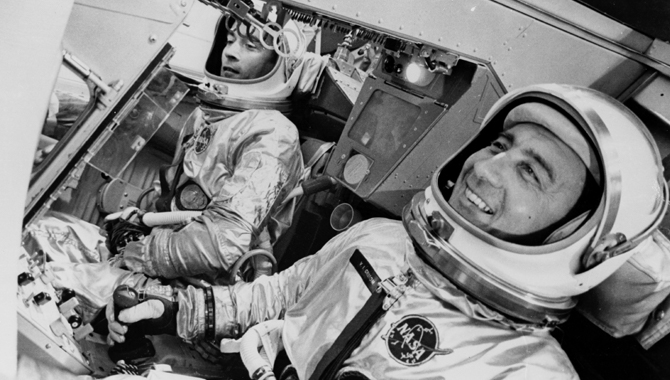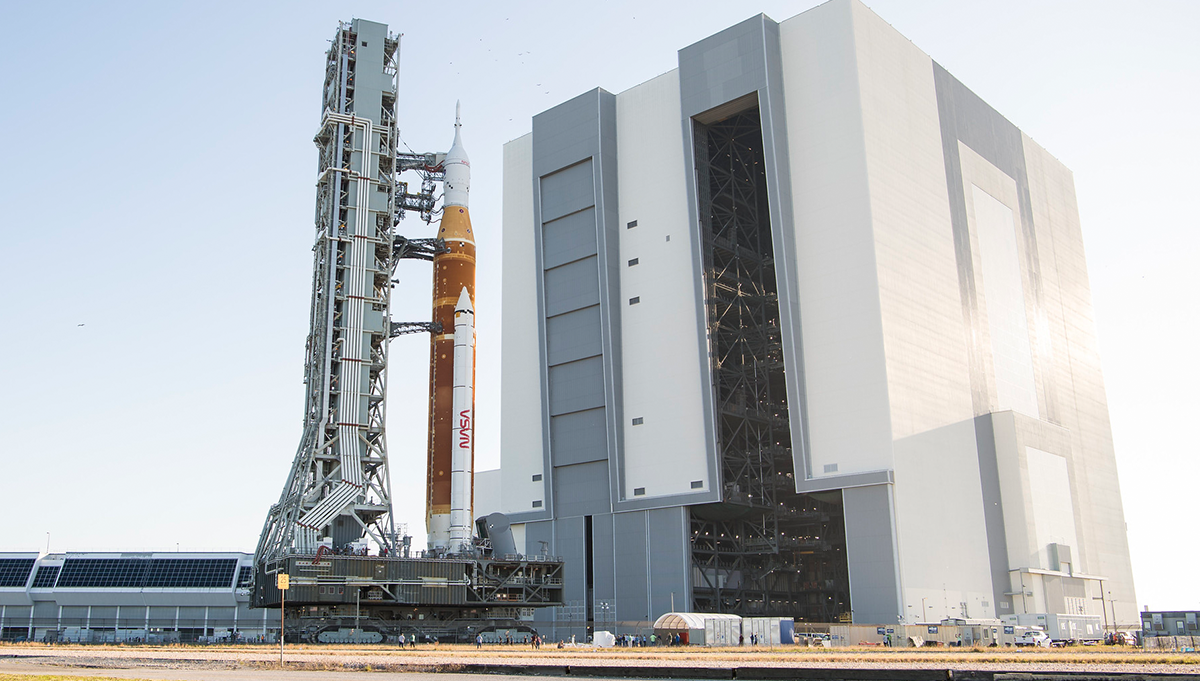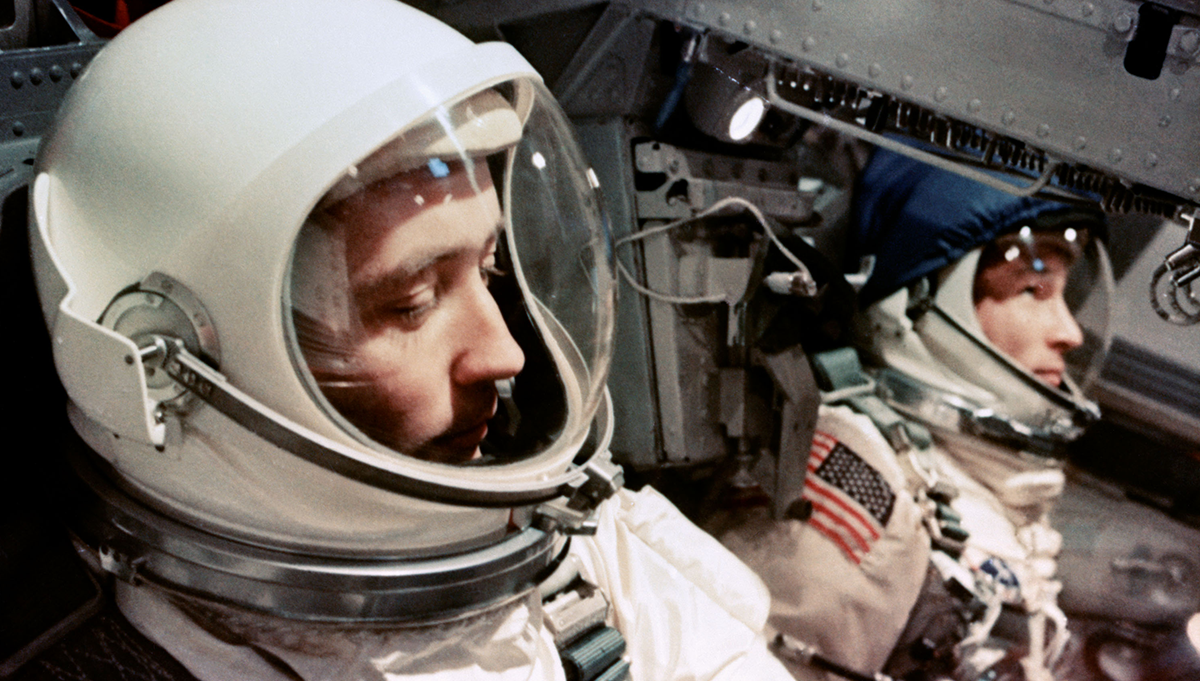
The James Webb Space Telescope's primary mirror, segments of which are seen here prepared for cryogenic testing in 2011, has unfolded for the last time on Earth as the team anticipates a launch this fall. Credit: NASA/MSFC/David Higginbotham
Team anticipates launch of largest, most powerful space telescope ever built.
Earlier this month, NASA unfolded the mirror wings on the James Webb Space Telescope (JWST), forming the full 18-segment, gold-coated beryllium primary mirror for the last time on Earth. The milestone marks another step toward the launch of what will be the largest and most powerful telescope in space, one that will look farther into the history of the universe than ever before. Launch is currently scheduled for October 31, 2021.
“We are getting close to ship and launch, so there’s a lot of excitement around that, and then that next phase of commissioning,” said Gregory L. Robinson, Director for the James Webb Space Telescope Program in the NASA Science Mission Directorate (SMD), speaking during a May 11 virtual press briefing.
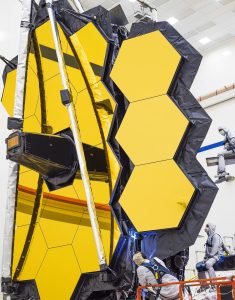
The world’s most powerful space science telescope has opened its primary mirror for the last time on Earth.
Credit: NASA/Chris Gunn
Webb will launch aboard an Ariane 5 rocket lifting off from the Arianespace’s ELA-3 launch complex in French Guiana. For several reasons— including that the assembled telescope is now too large to fit inside a Lockheed C-5 Galaxy cargo plane—NASA will transport Webb to Guiana in a special, environmentally controlled container aboard a ship, leaving from California and passing through the Panama Canal. The journey will take about two weeks.
“If you were to fly to French Guiana, there are seven bridges between the airstrip and the processing facilities which would not withstand the loads of JWST going across them. So, they had not much of a choice but to go by ship,” said Bill Ochs, James Webb Space Telescope project manager, speaking at the virtual briefing.
Webb will orbit around the Sun at what is known as the second Lagrange point, a point about 1 million miles beyond Earth, where the gravitational forces of the Sun and Earth and the orbital motion of JWST will balance, causing it to orbit the Sun approximately in line with Earth.
Webb will operate in a delicate temperature balance, as well. The side facing the Earth, the Sun, and the Moon will be exposed to 185 degrees Fahrenheit, while its delicate science equipment facing deep space will operate at minus 388 degrees. Webb will be protected by a high-performance, five-layer sunshield of Kapton, a film capable of handling extreme temperatures from minus 452 to plus 752 degrees Fahrenheit. The shield is about 69.5 ft. long and 46.5 ft. wide.
The first year of scientific exploration on Webb is already planned, with research selected by a peer-review panel of about 200 scientists who ranked submissions on their scientific merit, according to Klaus Pontoppidan, a project scientist at the Space Telescope Science Institute. Investigators from 44 countries around the world and 45 U.S. states were selected. “It’s truly a global scientific endeavor,” Pontoppidan said.
“One way to look at it is that there are many exciting programs in the first year that address questions that we didn’t even know we had until a few years ago,” said Pontoppidan, speaking at the press briefing. “So, these are questions that obviously Webb could never have been designed for because it was designed long before a couple of years ago.”
Webb will primarily examine the infrared spectrum, wavelengths that, for instance, penetrate through the swirling dust of newly forming stars and planets, providing a view of the early inner workings of galaxies. Research during the first year includes a closer look at regions with super massive black holes at the centers of galaxies that were first imaged by the Event Horizon Telescope.
“There are proposals that will go and look at those regions and understand the environments using the infrared capabilities of Webb to penetrate into the center of the galaxies and understand more about those supermassive black holes, including one in our own Milky Way center,” Pontoppidan said.
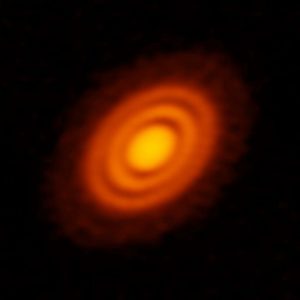
Image of the protoplanetary disk surrounding the young star HD 163296 as seen in dust.
Credit: ALMA: ESO/NAOJ/NRAO
“In the past few years, we have gotten these images with ALMA (the Atacama Large Millimeter Array) of protoplanetary disks forming planets around other stars. They show these beautiful rings and spiral patterns that are evocative of interactions with young planets embedded in the discs. We haven’t seen those planets yet,” Pontoppidan said. “There are programs with Webb to go and take images of those very same discs to try and see if we can detect the planets that ALMA suggests are there.”
Other research will look at exoplanets orbiting so close to their central stars that they might have molten surfaces and clouds that rain lava. Also in the first year, researchers will look within our own solar system, searching for Pluto-like worlds in the frozen debris of the Kuiper Belt.
“Webb’s innovative multi-object spectrograph will pick out thousands of individual galaxies from many epochs in the universe’s history to see how they change over time,” said Eric Smith, James Webb Space Telescope program scientist. “…The discovery capability of Webb is limited only by our own imaginations, and scientists around the world will soon be using this general-purpose observatory to take us places that we haven’t dreamed of going before.”
To have an image of Webb in the virtual background of your online calls and meetings, visit APPEL KS’s virtual backgrounds page or click here.






